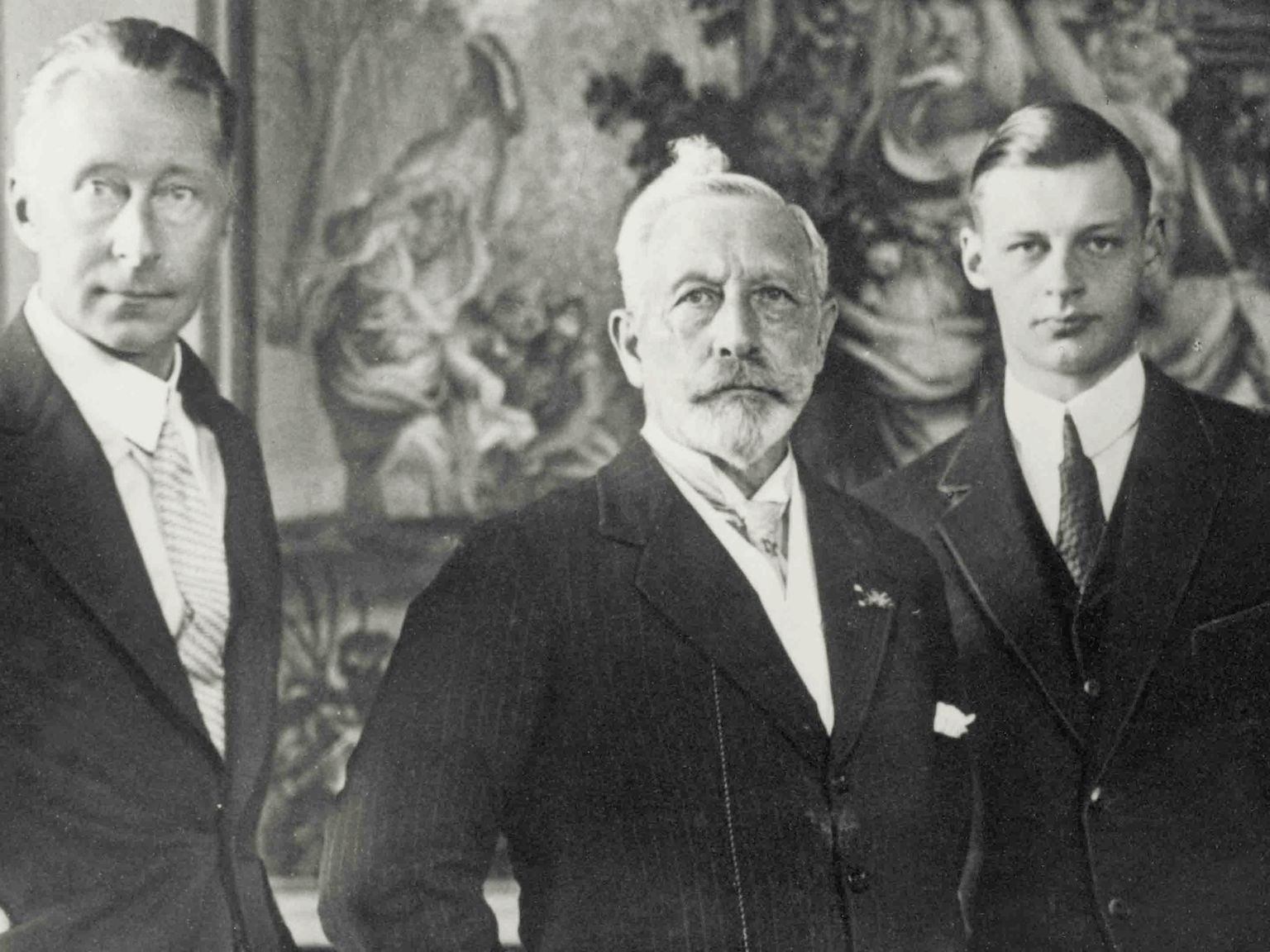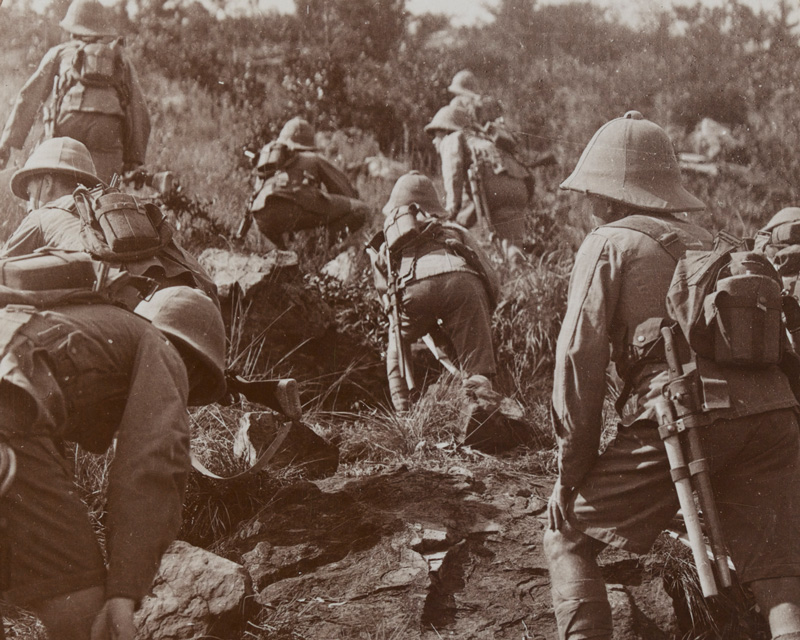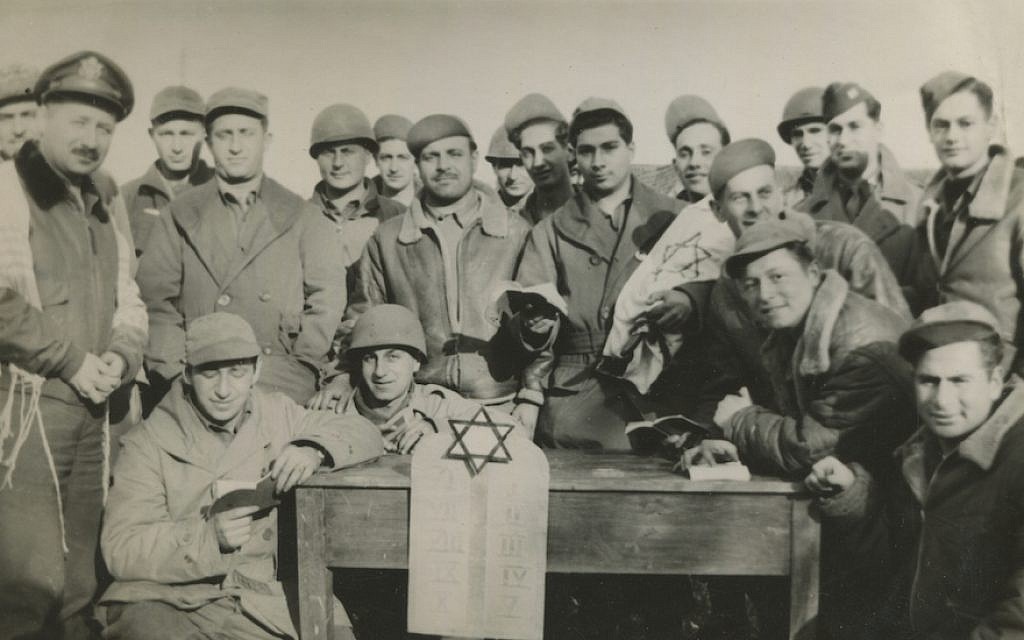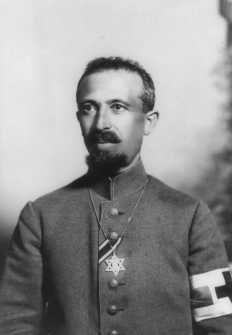In one of their last photos together, Kaiser Wilhelm II (center) stands for a photograph with his son, the future Wilhelm III (left) and Grandson, who would have been the future Wilhelm IV (right)
The Waning Days of Wilhelm II's rule saw a large uptick in socialist and extremist politics in the German Empire, not helped by the large influx of underground Communists who came under Germany's rule following the Great War and the economic strain needed to both garrison their occupied territory and keep their ally Austria-Hungary from collapsing under its own failures. With Wilhelm II's less-than-effective leadership and increasing withdrawal from the responsibilities of rule, as well as his declining health, Wilhelm III indeed served as something of a Prince Regent in the latter quarter of the 1930's, with the tacit backing of the Military and the conservatives in the Reichstag.
While an espoused German nationalist, Wilhelm III, following his father's death and his ascension, nevertheless sought a diplomatic solution to the French and British demands for the return of Alsace-Lorraine and the "liberation" of Belgium, despite clear intentions from the Allied powers to declare war regardless of the outcome. Seeing the results of the US plebiscites in their occupied states amount to nothing, as the CSA badgered for more regardless, Wilhelm refused the Allied demands, which led to the Entente powers launching a series of coordinated attacks on German holdings in France, Belgium and the Netherlands.
While Germany had lost a great deal of its centralized military solidity in the aftermath of the Great War to Bureaucracy and politicking, the German Army was nonetheless still a sharp sword, and they managed to stonewall Entente efforts to invade Germany itself from the West while, alongside Austria, Bulgaria and the Ottomans, succeeded in warding off Russian attacks from the East. Some aid came early in the war when the UK made the mistake of their "protective occupation" of Norway, which turned the Scandinavian nations away from the Entente and brought Norway and Denmark into the War, opening up bases for German use in those countries as well as providing resources and technical assistance to the Central Powers. Italy meanwhile, while not officially joining the war, nevertheless made it clear they would not interfere with any movements of their old adversary Austria, likely hoping to scoop up some British and French territorial holdings in Africa.
An Early tragedy struck the House of Hohenzollern when Prince Wilhelm IV was killed fighting the French in late 1941, which may have contributed to a resolve to see through the war on the part of his father, who privately damned the British and French for "forcing another war" on the German people. The death of the Crown Prince so early in his father's rule also served to unite the German people in a desire for revenge, and memories of the shortages and hardships of the First Great War were forgotten.
By the Winter of 1941-42, the Entente's advances had effectively been halted, and indeed the Central Powers were beginning to push them back.










